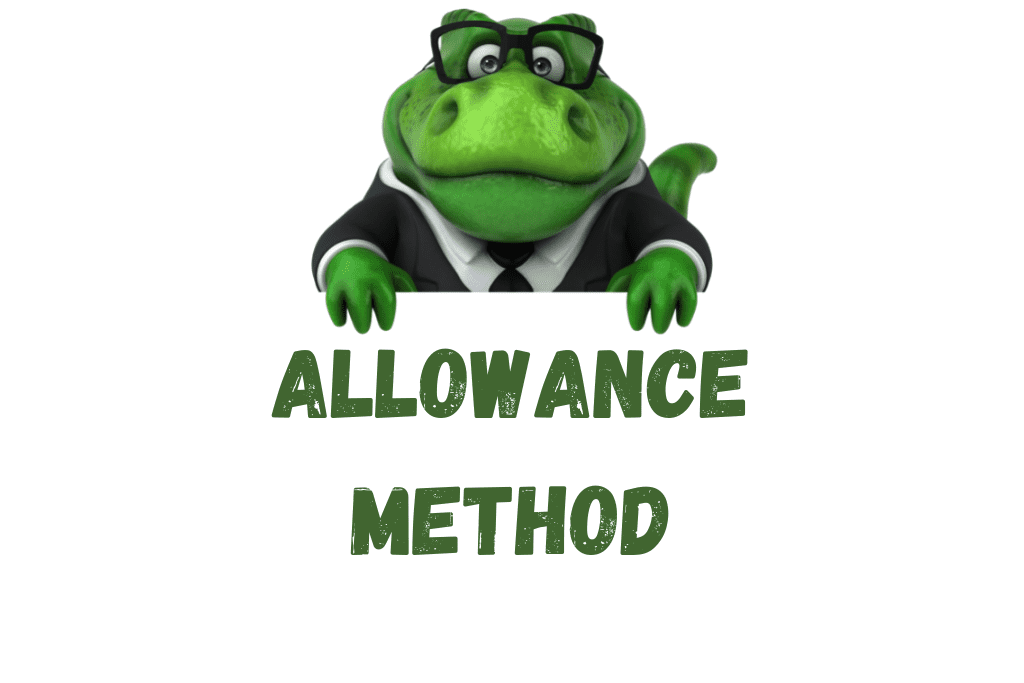The Allowance Method for Doubtful or Uncollectible Accounts is used to estimate future bad debts based on current month revenues. Using past performance data, a company can estimate that a certain percentage of current sales can reasonably be expected to become bad debts. To conform to the Matching Principle, the company records that potential bad debt in the same month that the related revenue is recorded.
Why is the Allowance Method Used?
At the time revenue is recorded, a company does not yet know which accounts will prove to be uncollectible. We don’t want to record any reduction in the Accounts Receivable account so we use a related contra account called Allowance for Doubtful Accounts or Allowance for Uncollectible Accounts to track the estimate. By using the contra account, we can preserve the true Accounts Receivable balance while also recognizing that some portion of that balance is overvalued because of potential bad debt.
On the Balance Sheet here is how that is reported:
| Accounts Receivable | $10,000 |
| Less Allowance for Doubtful Accounts | (500) |
| Net Realizable Value | $ 9,500 |
What we are showing on the Balance Sheet is the full value of Accounts Receivable and the realistic value of what we expect to collect of that amount. This ties in to the GAAP rule of Conservatism–accurately representing the value of accounts including potential losses on the financial statements.
How Do You Write-off Bad Debt Using the Allowance Method?
Because the Allowance for Doubtful Accounts is based on an estimated amount, a company chooses a method to use in making that estimate. The two most common methods taught in accounting classes are:
The Aging of Accounts Receivable Method focuses on the Balance Sheet (Assets). The Percent of Sales Method focuses on the Income Statement (Revenue). Either method conforms to GAAP.
For the complete Accounting Student Guide to Bad Debts and the Allowance for Doubtful Accounts, check out this article:
For more information and examples about Bad Debts and the Allowance for Doubtful Accounts, watch this video:
-
Tax Liability Accrual Explained
Accruing tax liabilities in accounting involves recognizing and recording taxes that a company owes but has not yet paid. This is important for accurate financial reporting and compliance with accounting
-
Nonprofit Monthly Financial Close Process Overview
The monthly accounting close process for a nonprofit organization involves a series of steps to ensure accurate and up-to-date financial records. This process ensures that financial statements are prepared, reviewed,
-
Navigating Payroll Taxes for Nonprofits: Responsibilities and Compliance
Payroll taxes are the taxes that employers withhold from their employees’ wages and are required to remit to the appropriate government agencies. They include various taxes that fund government programs,
-
Understanding Form 990: Transparency and Accountability for Nonprofits
Form 990 is a reporting document filed by tax-exempt organizations in the United States with the Internal Revenue Service (IRS). It provides detailed information about the organization’s financial activities, governance,
-
Financial Disclosures for Affiliated Nonprofit Organizations
Disclosures related to revenue sharing, consolidated financial statements, noncontrolling interests, and related party transactions in the context of affiliated organizations within a nonprofit are crucial for transparency and accurate financial
-
Related Parties in the Nonprofit Sector Explained
Related parties in the nonprofit sector refer to individuals, organizations, or entities that have a close relationship with a nonprofit organization that could potentially influence financial transactions or reporting. These

